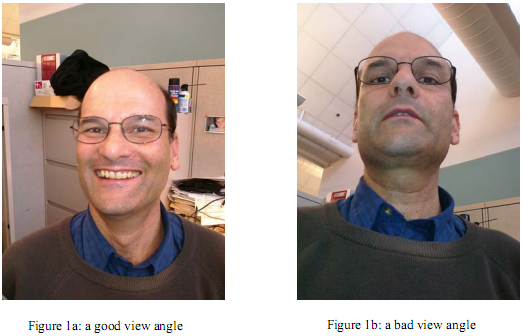The upcoming HP Pre 3 will feature a front-facing camera when it finally arrives this summer (hitting Europe in late June), bringing with it the opportunity to place some video calls with webOS. HP's a bit late to the game on that one, but it could be looking to distinguish itself by offering some innovations to how we use videoconference software, revealed in a paper the company's recently published.
First up, HP tackles the problem of properly framing your outgoing video feed. Instead of taking up screen space by showing a thumbnail view of your own face, the company suggests using visual cues to let you know when there might be a problem with the phone's viewing angle. While the solution doesn't do anything advanced like head-tracking or face-recognition, it aims to solve the problem of the dreaded nostril-cam, where your natural inclination to hold your phone below eye level results in the camera having a very steep viewing angle, right up your nose. HP's idea is to use the phone's sensors to detect when it's being held at such an angle, and decrease the display's brightness and saturation to clue you in that there might be a problem without resorting to distracting alerts.
Also addressing the issue of limited screen space, HP looked at how to best display the video feeds from a number of participants when in a group video call. Rather than cramming them all on one screen, a smartphone could use its sensors to let you tilt the phone from side to side to let you pan a virtual display back-and-forth. Automatic stereo panning could act as cue to let you know who's talking when their video feed is off-screen. Even without tilting the phone, you could use touchscreen controls to scroll your viewscreen around.
Neither of these techniques are confirmed for any webOS video chat app, but they're certainly among the features HP will be keeping in mind.
Source: HP (pdf)
Via: PreCentral

